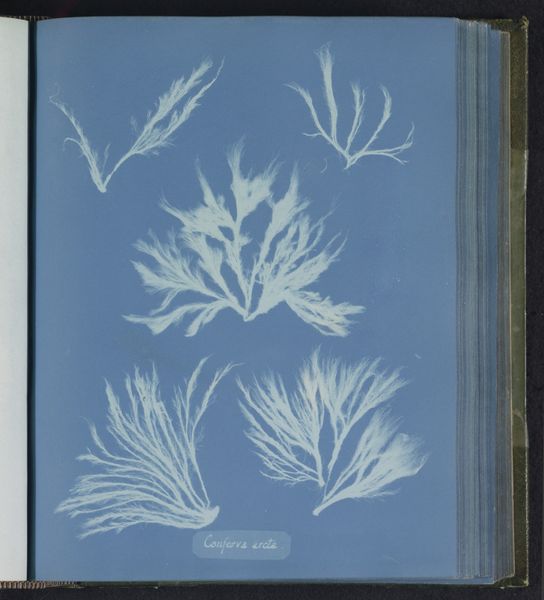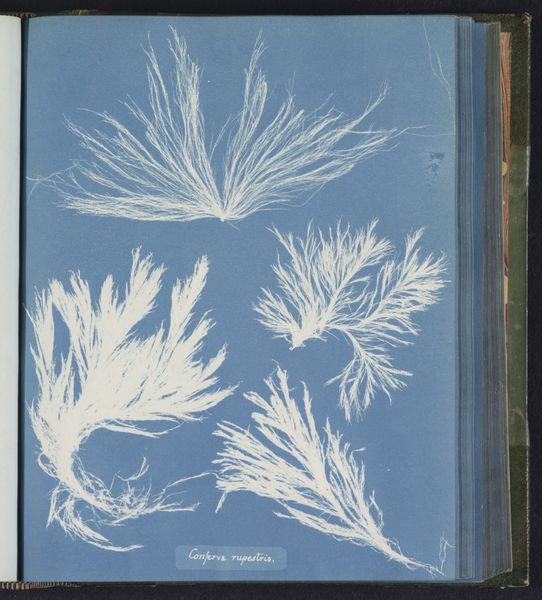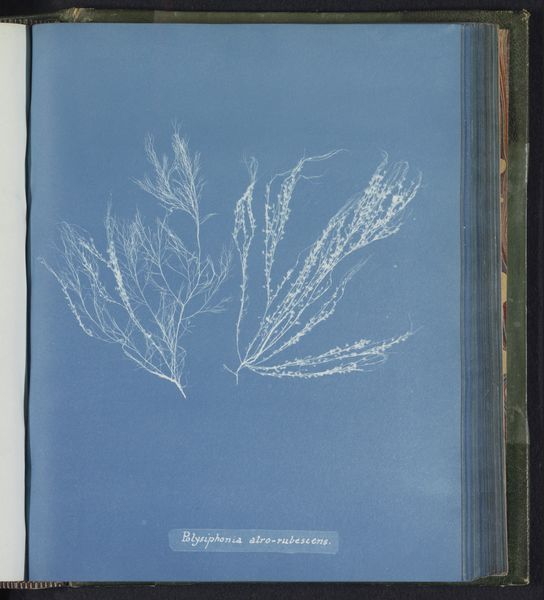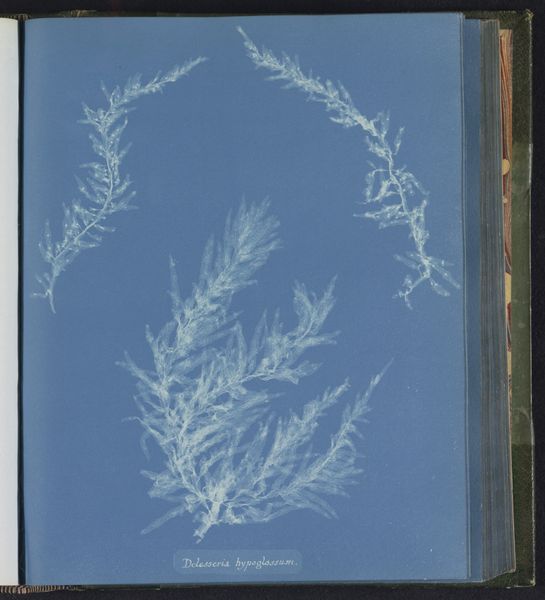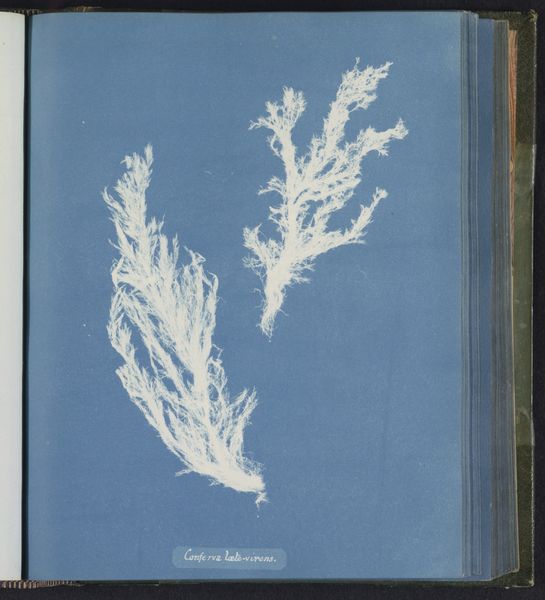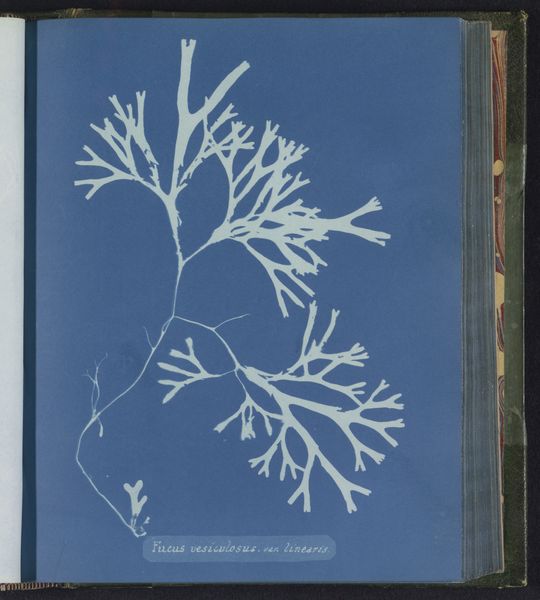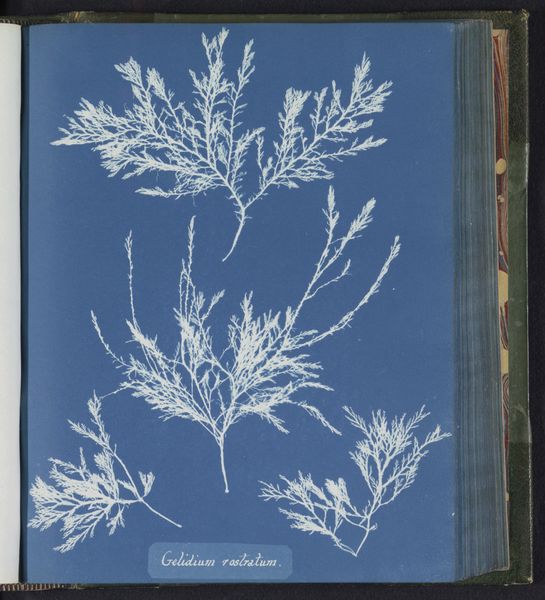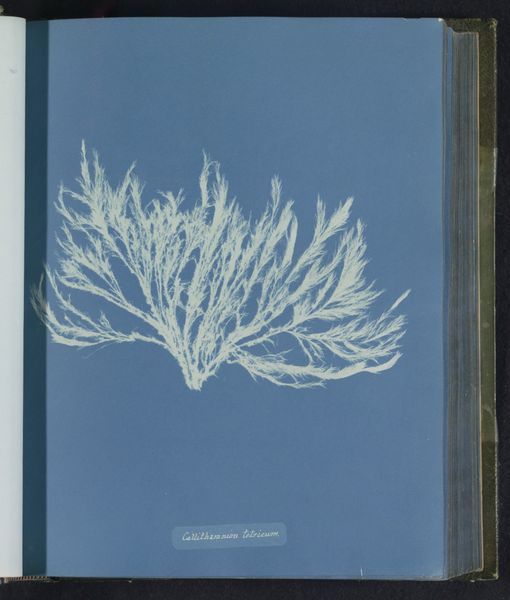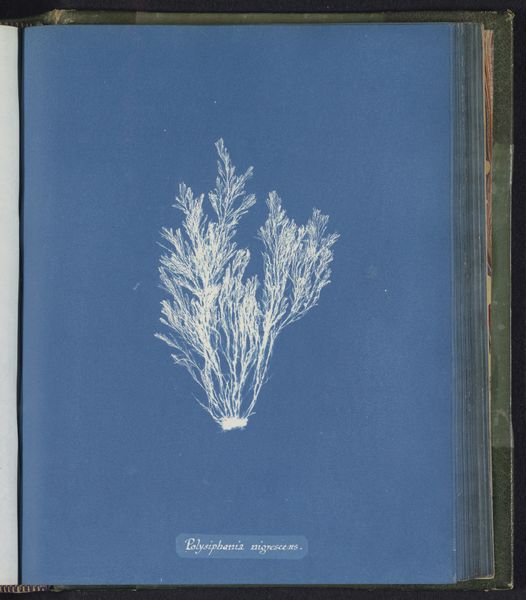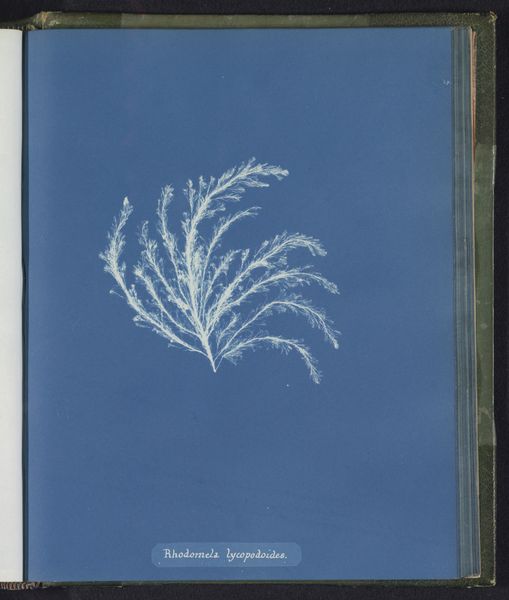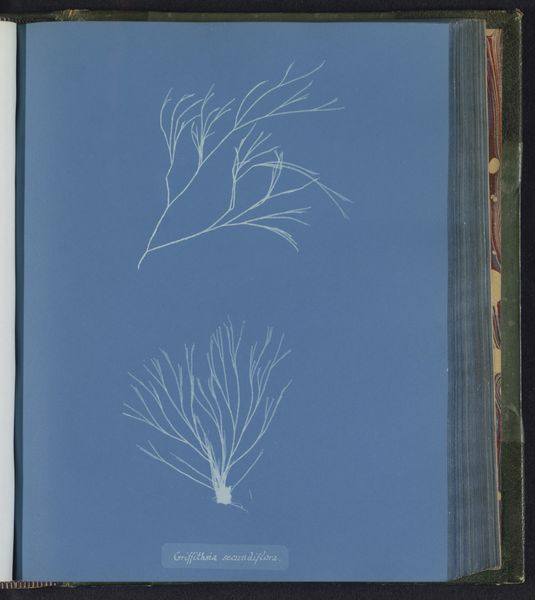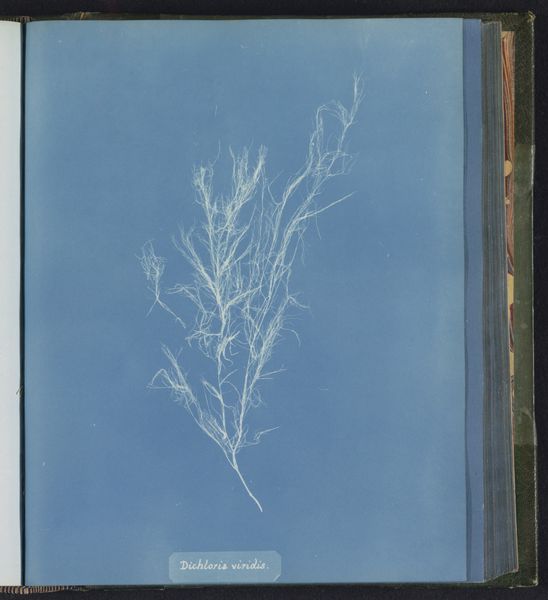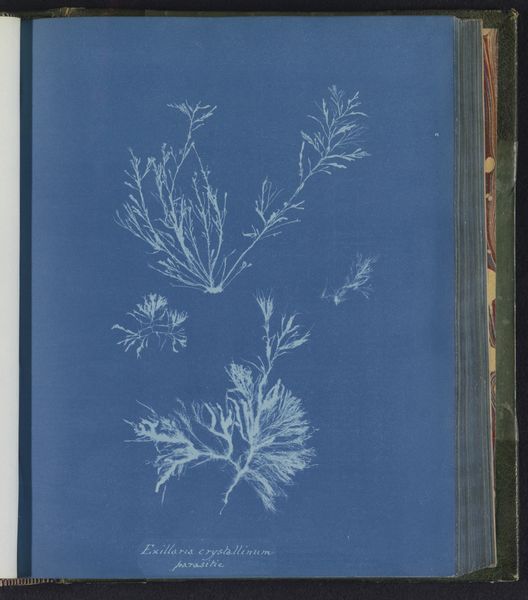
print, paper, cyanotype, photography
#
still-life-photography
# print
#
paper
#
cyanotype
#
photography
#
watercolor
Dimensions: height 250 mm, width 200 mm
Copyright: Rijks Museum: Open Domain
Editor: Here we have Anna Atkin's cyanotype "Halyseris polypodioides," created sometime between 1843 and 1853. The ghostly, photogram-like impression of the algae against the intense blue is quite striking, especially how the negative space interacts with the plant's form. How do you approach interpreting this piece? Curator: Immediately, the stark contrast between the white algae and the Prussian blue invites analysis. Note how Atkins uses the cyanotype process to flatten the three-dimensional object, emphasizing line and form over texture. It's almost as if she’s reducing the seaweed to its most essential geometric components. The meticulous arrangement of the specimens – observe the hierarchy she establishes by size and placement – contributes to a controlled composition. Wouldn't you agree that this systematic ordering is crucial to understanding the artwork? Editor: I do, but it almost feels clinical. Was she making an artistic statement, or was this purely scientific documentation? Curator: The dichotomy between art and science dissolves upon closer inspection. Consider the deliberate tonal variations within the blue ground and within the translucent forms of the plant. These are not merely accidental; they are controlled modulations achieved through precise timing and chemical manipulation. Are these artistic choices? Is this aesthetic intention discernible? I would argue affirmatively on both counts. This careful manipulation of process transforms a scientific specimen into a study of light, shape, and form. Editor: That's a great way to look at it. I never considered the active role the artist plays in something we might initially perceive as just a direct transfer. It changes my entire understanding. Curator: Exactly! By analyzing the formal elements and process, we can begin to grasp Atkin's vision beyond mere botanical illustration.
Comments
No comments
Be the first to comment and join the conversation on the ultimate creative platform.
